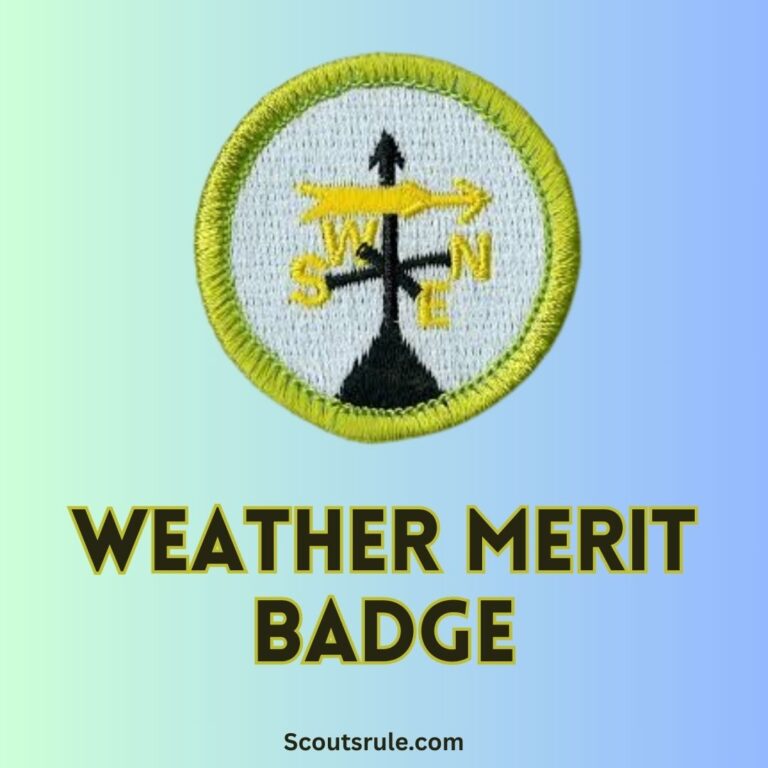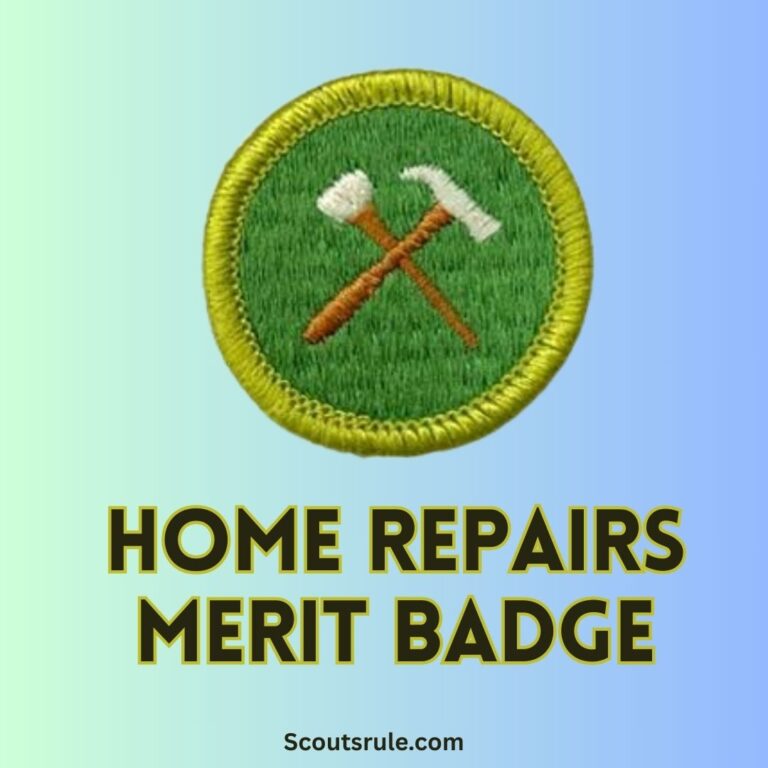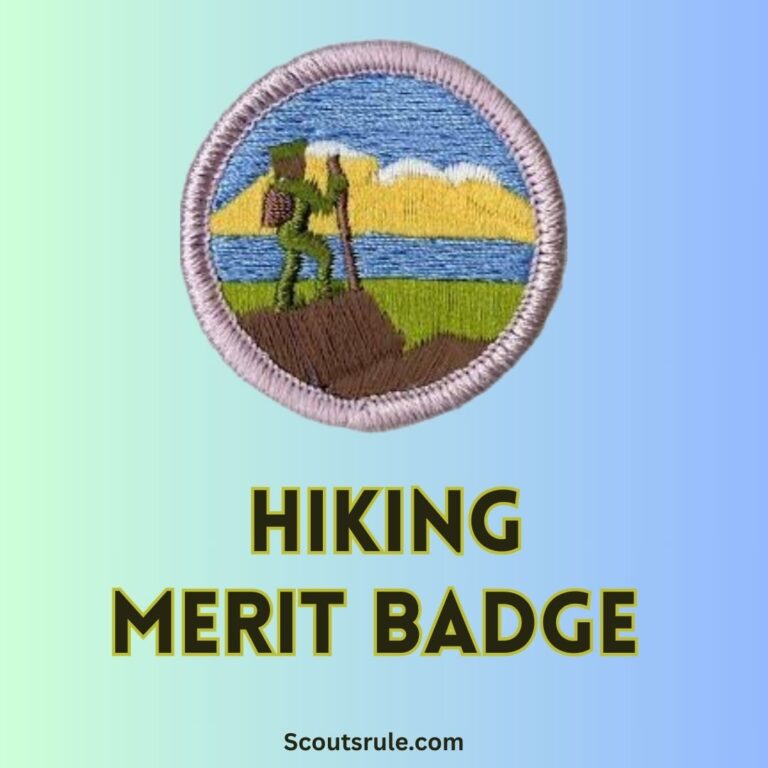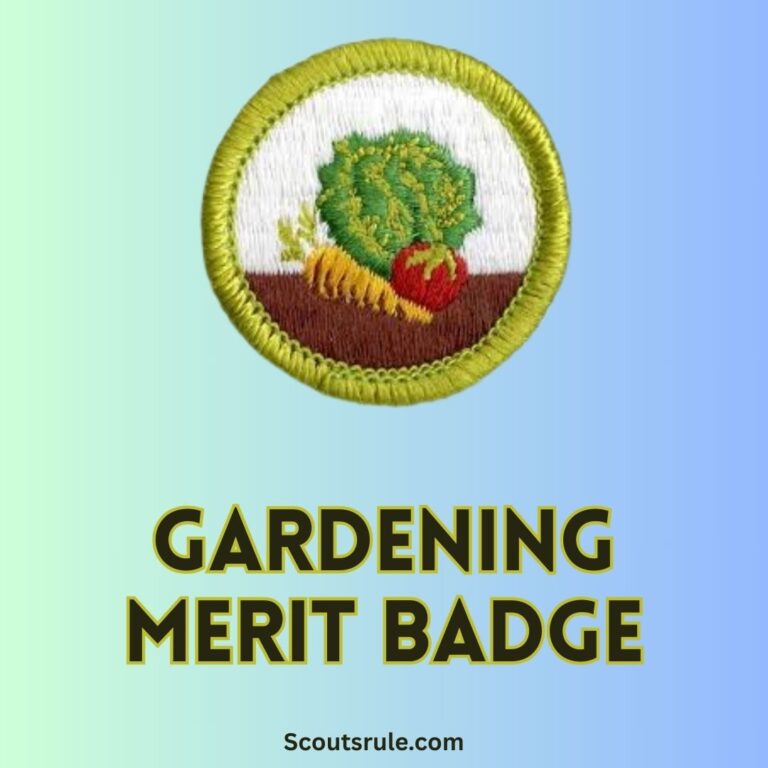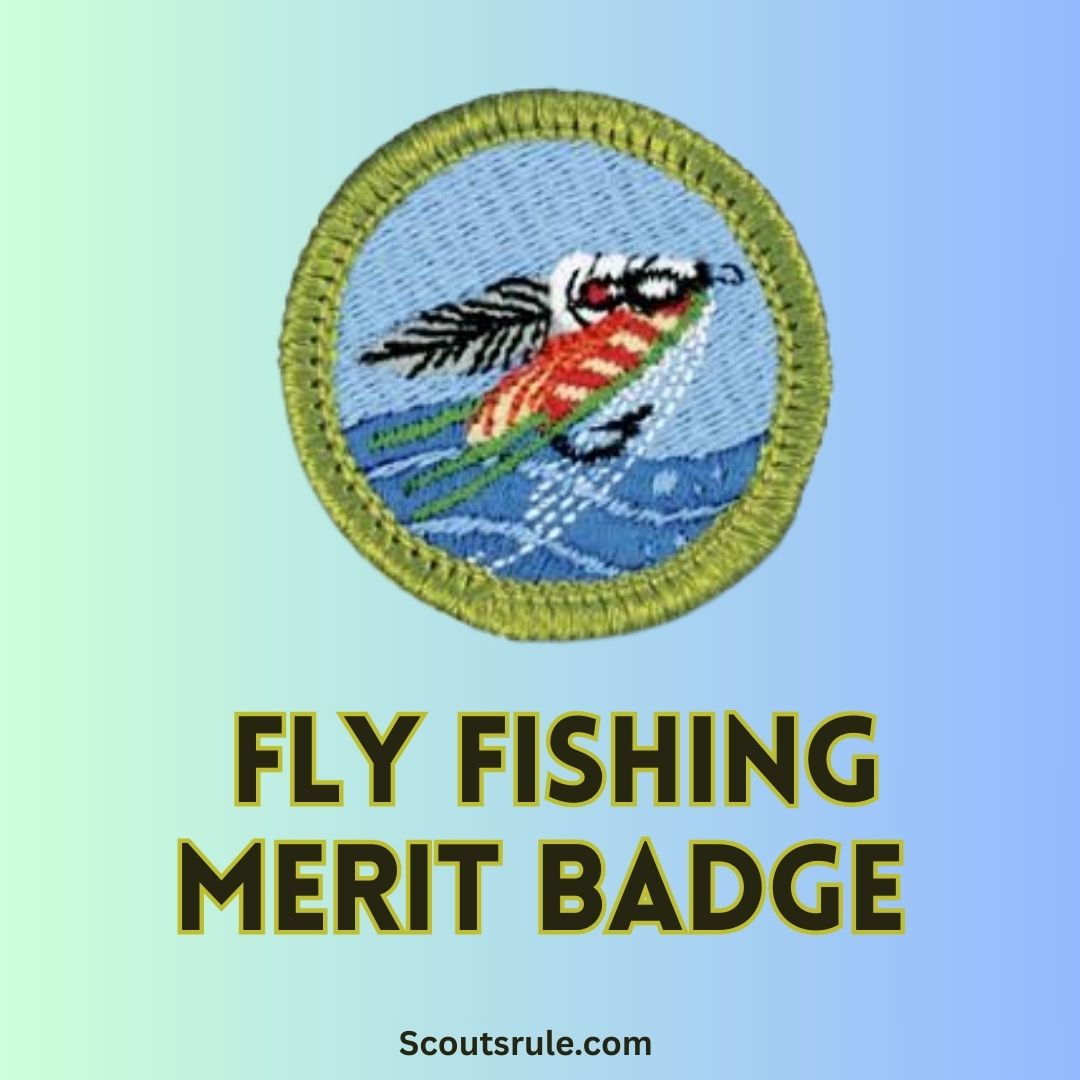
This guide is intended to help Scouts fully explore the art and science of fly fishing—from learning safety protocols and mastering specialized gear to understanding casting techniques, tying essential knots, and appreciating the environmental and cultural aspects of fly fishing. Whether you are new to fly fishing or have some experience already, this guide will walk you through each requirement in detail while providing practical project ideas, tips, and insights to help you confidently earn your merit badge.
Post Contents
- Introduction: The Allure of Fly Fishing
- 2. Overview of the Fly Fishing Merit Badge
- 3. Safety First: Hazards, Health, and First-Aid
- 4. Essential Equipment: Matching Your Fly Fishing Gear
- 5. Knot Tying: The Backbone of Fly Fishing
- 6. Understanding Flies: Types, Their Uses, and Imitation
- 7. Casting Techniques and Skills
- 8. Field Experience: Observing Fish Behavior and Aquatic Environments
- 9. Ethical and Environmental Considerations
- 10. Documenting and Reflecting on Your Experience
- Conclusion: Embracing a Lifelong Connection to Nature
Introduction: The Allure of Fly Fishing
Fly fishing is often described as both an art and a sport. Unlike conventional fishing, fly fishing challenges you to master a delicate balance between form and function. With its roots in centuries-old traditions and its ongoing evolution spurred by modern innovations, fly fishing is admired for its beauty, precision, and calm yet focused nature. When you cast a fly line, you are not only engaging with nature but also working to understand aquatic ecosystems and the subtle behaviors of fish.
This merit badge is an exciting opportunity to explore fly fishing in depth, gaining practical skills and theoretical knowledge. As you learn to handle specialized gear, tie unique knots, and perfect your casting, you’ll discover why fly fishing has captivated anglers around the world for generations. More importantly, this journey will provide you with lifelong lessons in patience, respect for the environment, and the satisfaction of mastering a skill that brings you closer to nature.
2. Overview of the Fly Fishing Merit Badge
The Fly Fishing Merit Badge is part of the Boy Scouts of America’s extensive merit badge program designed to broaden a Scout’s horizons and develop specialized skills for varied interests. Specific goals of the fly fishing badge include:
- Developing a Thorough Knowledge of Safety: Understanding the hazards associated with fly fishing and learning how to protect yourself by adopting the appropriate safety measures.
- Mastering Equipment Fundamentals: Learning how to select, assemble, and care for fly fishing gear—including fly rods, fly lines, leaders, and tippets—is central to this badge.
- Learning Essential Knots: Knots are the backbone of fly fishing. You will practice tying key knots such as the arbor knot, nail knot, improved clinch knot, and surgeon’s knot.
- Understanding Fly Types and Their Imitations: The badge emphasizes the variety of flies—dry, wet, nymphs, streamers, and more—and teaches you when and how each type is used to imitate natural food sources.
- Developing Casting Skills: Casting techniques (overhead cast, roll cast, and other variations) are fundamental skills for the fly fisher. You’re required to demonstrate the ability to consistently cast to a specific distance and with accuracy.
- Field Observations and Environmental Awareness: Selecting a suitable location and observing fish behavior form a crucial part of the learning process, connecting you with nature and helping you learn how fish respond to their environments.
The combination of classroom study, practical hands-on projects, and field experiences ensures you gain a comprehensive understanding of fly fishing—inspiring responsible, ethical, and skilled participation in this timeless sport.
3. Safety First: Hazards, Health, and First-Aid
Fly fishing, while immensely rewarding, comes with its own set of safety challenges. Understanding these hazards and knowing how to mitigate them is essential for ensuring that your experience is both enjoyable and risk-free.
3.1 Identifying Common Hazards
Some hazards you might encounter while fly fishing include:
- Water-Related Risks: Falling into water unexpectedly, getting caught in fast currents, or even experiencing hypothermia if you’re fishing in cold conditions.
- Handling Equipment: Fly fishing often involves sharp hooks, fly lines, and other equipment that can cause cuts, punctures, or abrasions.
- Sun Exposure and Dehydration: Long periods in the sun can lead to sunburn or heat exhaustion. It’s important to plan for hydration, wear sun-protective clothing, and use appropriate sunscreen.
- Environmental Hazards: Uneven ground, slippery rocks, and unexpected obstacles (like overhanging branches) may pose tripping hazards when setting up camp near your fishing spot.
3.2 First-Aid Procedures and Preventive Measures
For each hazard, specific safety and first-aid measures are necessary:
- Personal Protective Equipment (PPE): Always wear a life jacket if you’re on or near a boat, use gloves when handling sharp hooks, and don a hat and sunscreen to guard against sunburn.
- Proper Hydration and Sun Protection: Bring plenty of water, wear a long-sleeved UV-protective shirt, and ensure you take breaks in the shade.
- Handling Injuries: If you receive a cut or puncture from a hook, clean the wound carefully with soap and water, apply an antiseptic, and bandage the area. Be aware of the symptoms of infection, such as swelling or unexpected pain.
- Awareness and Communication: Always let someone know your fishing location and expected return time. If you’re fishing with others, ensure effective communication through a buddy system.
Discuss these preventive measures in detail with your merit badge counselor. In a live demonstration or role-play, you might show how to properly handle a hook or practice using a first aid kit. Safety is paramount, and understanding these guidelines will allow you to focus on the more enjoyable aspects of fly fishing.
4. Essential Equipment: Matching Your Fly Fishing Gear
A balanced fly fishing system is essential to ensure good performance and safety. Your gear consists of several key components that must work together seamlessly.
4.1 Fly Rods
- Purpose: The fly rod is a long, flexible rod made specifically for casting lightweight artificial flies. Rods come in different lengths and weights, designed for various types of fly fishing (e.g., freshwater or saltwater).
- Selection Considerations: When selecting a fly rod, consider the type of fish you aim to catch, the typical water conditions, and your own strength and skill level. A rod with the right action (flexibility and power) is crucial for effective casting.
4.2 Fly Lines, Leaders, and Tippets
- Fly Lines: Choose fly lines based on weight, taper, and the type of fishing you plan to do. A balanced system is vital; for example, a heavier line might be necessary for larger fish or windy conditions.
- Leaders and Tippets: The leader connects your fly line to the fly itself. It must be strong yet nearly invisible in the water. A tippet is the final, fine section of the leader to which the fly is tied. Selecting the appropriate tippet size is important for successfully fooling fish and ensuring that you do not spook them.
4.3 Matching the System
Your merit badge work includes demonstrating how to match a fly rod, line, and leader to create a balanced system. This means ensuring that each element complements the others:
- Balance: The rod should flex nicely with the weight of the line and leader, allowing for smooth casting.
- Care: Discuss how to properly care for your equipment to maximize its lifespan, such as rinsing fly rods after saltwater use, storing fly lines properly, and keeping leaders and tippets free of damage.
- Practice: Work with your counselor as you set up your fly fishing system to learn how different setups affect your casting distance and accuracy.
Mastering your gear is essential not only for performance but for safety. A balanced system prevents mishaps during casting and improves your overall fishing experience.
5. Knot Tying: The Backbone of Fly Fishing
Tying the proper knots is critical in fly fishing; the strength and reliability of your system depend on secure, well-tied knots.
5.1 Arbor Knot
- Purpose: The arbor knot is used to attach backing (the extra line on the reel) to the spool of a fly reel.
- Method: Learn how to tie the arbor knot securely to ensure that your backing stays in place. Practice it several times until you can tie it quickly and accurately.
5.2 Nail Knot
- Usage: The nail knot is essential for attaching the backing to the fly line, as well as for connecting the leader to the fly line.
- Technique: Study the precise, step-by-step method of tying a clean and strong nail knot; practice using different lengths of backing and fly line until the connection is taut and smooth.
5.3 Additional Knots
- Loop-to-Loop Connections: In some setups, you may use loop-to-loop connections to attach the leader to the fly line or tippet, allowing for easier replacement of flies.
- Improved Clinch Knot: This knot is the standard method for attaching a fly to the terminal end of the leader. Master its form and ensure you know how to dampen and set the knot for maximum retention.
- Surgeon’s Knot: Sometimes used for adding a tippet to a leader, the surgeon’s knot is praised for its strength in situations where extra security is required.
The better you master these knots, the more confident you’ll be in your gear and your ability to fish effectively. Document your progress with pictures or videos and include these in your final portfolio.
6. Understanding Flies: Types, Their Uses, and Imitation
Flies are not just lures; they are carefully crafted imitations of the insects and other food sources that fish naturally feed on.
6.1 Types of Flies
- Dry Flies: Designed to float on the water surface, dry flies mimic adult insects that land on the water. They’re often used when fish are feeding on skittering insects.
- Wet Flies: These are intended to sink beneath the surface or float at varying depths, mimicking emerging or drowned insects.
- Nymphs: Imitate the juvenile stages of aquatic insects. Nymphs are effective when fish are feeding below the surface.
- Streamers: Streamers mimic baitfish or leeches and are designed to attract larger or predatory fish.
- Other Specialized Flies: In some cases, anglers might incorporate bass bugs, poppers, or even saltwater flies, each designed for a specific type of water or fish behavior.
6.2 Fly Tying
Your merit badge project typically requires you to tie at least two types of flies.
- Practice Fly Tying: Learn the basics of fly tying using a fly-tying board, hooks, threads, dimples, and other materials. Follow step-by-step instructions to tie a dry fly and a nymph.
- Discuss the Imitation Element: Explain which natural food items each fly is designed to mimic and why that is effective in attracting fish. Understanding the local insect life and seasonal variations can significantly affect your success.
Flies are a combination of art and science. Successfully tying and selecting the right fly contributes to effective fishing and deepens your appreciation for the craft.
7. Casting Techniques and Skills
Casting is one of the most critical aspects of fly fishing. Proper casting is necessary to present your fly naturally, reach distances, and adapt to various wind and water conditions.
7.1 Overhead Cast
- Technique: The overhead cast is considered the traditional and most versatile form of fly casting. Learn how to:
- Perform a smooth, controlled backswing.
- Transition into a powerful forward swing.
- Release the line at the right moment to ensure maximum distance and accuracy.
- Practice Tips: Practice in an open field or calm water setting until your motion is seamless and your line flies elegantly.
7.2 Roll Cast
- When to Use: The roll cast is particularly effective when there isn’t enough room behind you to execute a full backswing or when obstacles prevent a conventional cast.
- Execution: Focus on keeping the line tight, executing a short, controlled loop, and releasing it smoothly.
7.3 Improving Casting Distance and Accuracy
- Techniques: Work on timing, weight distribution, and fluid body movement to improve both accuracy and distance.
- Drills: Execute repetitive casting drills, focusing on specific aspects of your swing. Record your casting sessions (video or notes) to analyze your form and adjust accordingly.
Consistent practice and constructive feedback from your counselor ensure that your casting becomes second nature.
8. Field Experience: Observing Fish Behavior and Aquatic Environments
A key part of the fly fishing experience is understanding the natural habitat and behavior of fish.
8.1 Selecting a Suitable Fishing Location
- Research Local Streams, Rivers, or Lakes: Choose a location known for good fly fishing. Consider factors such as water clarity, vegetation, and local fish species.
- Environmental Considerations: Ensure that the area is clean and that your fishing activities will not disturb the local ecosystem. Respect local regulations and guidelines.
8.2 Observing Fish Behavior
- Above and Below the Surface: Take time to observe which types of flies the fish seem to be attracted to. Notice if they are feeding on insects floating on the surface (dry flies) or diving beneath the water (nymphs or wet flies).
- Record Your Observations: Keep notes on the water conditions, time of day, and the behavior of the fish. Include sketches or photographs if possible.
These field experiences connect theory with real-life conditions and enhance your ability to choose the right fly and casting technique.
9. Ethical and Environmental Considerations
Fly fishing is not just about the physical act of fishing—it’s also about respecting nature and ensuring that our actions do not harm aquatic ecosystems.
- Conservation Ethics: Practice catch-and-release techniques, minimize disruption to the natural habitat, and always clean up after your activities.
- Public Responsibility: Familiarize yourself with local rules on fishing limits and protected species. Understand that responsible angling helps ensure that fish populations remain healthy.
- Environmental Stewardship: Support local conservation efforts and understand how you can contribute to the preservation of waterways and surrounding ecosystems.
By integrating ethical considerations into your fly fishing practice, you become not only a more effective angler but also a responsible steward of nature.
10. Documenting and Reflecting on Your Experience
Throughout the process of earning your Fly Fishing Merit Badge, thorough record-keeping is essential.
- Maintain a Detailed Journal: Document your gear practice sessions, casting drills, knot tying practice, and field visits. Include dates, conditions, successes, and challenges.
- Photographs and Videos: Take images or short videos of your casting techniques, fly tying sessions, and field experiences. These visual records serve as evidence of your progress and provide useful feedback.
- Reflective Writing: Write brief reflections on what you’ve learned through both successes and setbacks. Consider what techniques work best for you and how you can improve your performance.
Sharing your documentation with your merit badge counselor not only demonstrates your engagement but also helps you see your own growth over time.
Conclusion: Embracing a Lifelong Connection to Nature
Fly fishing is an art form that beautifully marries technical skill with profound natural appreciation. By working through the Fly Fishing Merit Badge, you learn much more than how to cast a line or tie a knot. You develop a balanced approach to handling specialized equipment, gain a deeper understanding of aquatic ecosystems, and learn to appreciate the delicate interplay between nature and the angler. Moreover, you learn the importance of safety, ethics, and conservation in every action you take.
The skills you acquire—from precise casting techniques and secure knot tying to effective observation of fish behavior—will not only help you become a more accomplished angler but will also enhance your awareness of the natural world. This knowledge empowers you to be a more responsible outdoor enthusiast and an informed citizen who values sustainable practices.
Ultimately, your journey in earning the Fly Fishing Merit Badge is a stepping stone toward lifelong enrichment. Whether you aim to pursue fly fishing as a hobby, explore a career in outdoor recreation or conservation, or simply hone a skill that deepens your connection with nature, the lessons learned here will echo in every cast of your line and every step along a quiet riverbank.
May your experiences on the water teach you patience, resilience, and a profound respect for the delicate balance of nature. Embrace every moment—both the challenges and the triumphs—as opportunities for learning and growth. And as you continue to refine your skills, let your passion for fly fishing inspire you to be an advocate for our precious aquatic resources.
Happy fly fishing, and may the lure of the water lead you on a journey of continuous adventure, learning, and fulfillment!

Hi, Robin here, A former lead Scout and here I share my inspiring stories about USA Scouts, leadership, adventure, how to guides and more.

